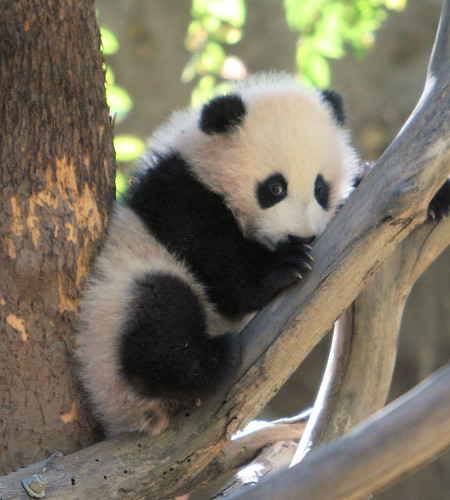Here will be facts about all the animals in Jamaa! (The page is not done yet.)
Wolves

- Wolves are the largest canines in existence.
- There are five subspecies of gray wolves in North America.
- The brain of a dog is 15-30% smaller than the brain of a wolf.
- A wolf can hear 16 times better than a human.
- A wolf has excellent eyesight. However, they cannot focus from a long distance.
- Wolves weigh between 40-140 pounds. Females are 15 pounds lighter than males, on average.
- Wolves are born with blue eyes, but they gradually change to a gold-yellow. Very few have blue.
- It is common for a wolf to travel 20 miles in search of food.
- Wolves usually hunt prey larger than themselves- elk, deer, caribou, and even ox.
- A wolf can eat up to 20 pounds of meat in one meal.
- Wolves catch about 1/10 animals they hunt.
- Wolves require 1-3 quarts of water a day.
- A wolf can go many days without eating.
- A lone wolf is called a dispersal wolf.
- Lone wolves rarely howl or mark their scent.
- Wolf dens are in deep river banks, logs, rock outcrops, or upturned roots.
- Wolves do not howl at the moon.
- The only enemy of wolf is man.
- There is only one documented case of healthy wolves attacked a human.
- The gray wolf is listed as endangered in all the Lower 48 states except Minnesota.
Rabbits

- Rabbits are not rodents- they are lagomorphs. Other lagamorphs are pikas and hares.
- More than half of the world's rabbit population is in North America.
- A male rabbit is called a buck, a female a doe, and the babies are kittens or kits.
- They are not common in Eurasia.
- A group of rabbit burrows is called a warren.
- Rabbit fur is soft, and can be brown, gray, and buff, a yellow-brown color.
- In Europe, rabbits are the main prey of red foxes, badgers, and lynxes.
- The longest-lived rabbit lived 16 years.
- Rabbits eat grass, forbs, and leafy weeds.
- Due to their diet, they must reingest their own droppings.
- There is a distinct difference between rabbits and hares- rabbits are born hairless, and with their eyes closed.
- Rabbits are raised for meat and kept as pets.
- Rabbit teeth never stop growing.
- Rabbits cannot vomit.
- Rabbits can purr.
- A group of rabbits is called a herd.
- A 4 pound rabbit can and will drink as much water as a 20 pound dog.
- Predators can literally scare a rabbit to death.
- Domestic rabbits can't breed with wild rabbits.
- The only place a rabbit sweats is on its paw pads.
Pandas

- Scientists do not know why pandas are black and white.
- Many find pandas cute, but they act like any grizzly bear.
- Males weigh up to 250 pounds, while females rarely reach 220.
- Pandas are listed as endangered.
- There are about 1,600 in the wild, and over 300 are in zoos.
- Pandas eat almost all bamboo, but maintain balance by eating grasses, small rodents, or musk deer.
- Adult pandas are generally solitary.
- Unlike other bears, pandas do not hibernate.
- Pandas were kept be ancient Chinese emperors.
- Female pandas will give birth once a year.
- A newborn cub is all white.
- The Chinese word for panda is Xiongmao, or Giant Cat Bear.
- Pandas live in the slopes of China and Tibet.
- There are two species of pandas: red pandas, and giant pandas.
- The giant panda is like a bear, while the red panda is like a raccoon.
- Red pandas eat acorns and roots as well as bamboo.
- Giant pandas generally stay on the ground, while red pandas spend time in trees.
Koalas

- Aside from the greater glider and ringtail possum, koalas are the only mammal that can live on eucalyptus leaves.
- A koala can store little to no fat.
- A baby koala, called a joey, is born blind and less than 1 gram.
- Koalas give birth to one joey at a time.
- Koalas eat leaves and bark from 12 species of eucalyptus trees.
- Koalas rarely drink water, as they get it from eucalyptus leaves.
- Koalas do not live in rainforests.
- Females may produce 5 or 6 joeys in their whole life time.
- Up to 4,000 koalas are being killed each year by cars or dogs.
- European settlers saw koala fur as good trading, and shot millions for their pelts.
- By 1924 koalas were extinct in southern Australia.
- Even after a koala dies, other koalas will stay out of its territory until the scent marks and scratches fade away.
- Eucalyptus leaves are very poisonous to many other animals. Koala digestive systems allow them to digest the leaves.
- After feeding on milk, joeys eat pap, a specialized form of droppings.
- A young koala eats leaves when it starts to ride on its mother's back.
Monkeys

- Monkeys do not like to be touched.
- Most monkeys are dangerous.
- Hawks, eagles, and humans are predators of monkeys.
- The loudest monkey is the Howler monkey.
- Monkeys can show many emotions, just like a human.
- Monkeys can laugh and smile.
- Like a human, each monkey has its own unique fingerprint.
- Monkeys have a brain that is large for their size.
- Monkeys are killed for stealing crops.
- Monkeys can be trained as service animals.
- There are 264 known species of monkeys.
- Monkeys have fingers and thumbs much like humans.
- Monkeys use tools such as rocks and sticks.
- Monkeys are very vocal animals.
- Monkeys are believed to be smarter than apes and lemurs.
- Monkeys have been sent into outer space and are used in experiments.
Tigers
- Tigers are the largest of the four species of big cats.
- Tigers adapt well to their surroundings.
- When tigers hunt, they only have a few seconds to kill it before it can run away.
- They can take down animals larger than themselves.
- Tigers live alone.
- A tiger may have up to 3-4 cubs at a time.
- There are 6 out of 9 original subspecies of tigers left on Earth.
- All 6 of those subspecies are endangered.
- Most species of tigers have only less than 1,000 left.
- One of the problems is that most of the offspring don't live to the age to breed.
- The tigers that do survive in the wild can live to be about 15 years.
- In a zoo, tigers can live to 20 years.
- Siberian tigers live longer than the other species.
- Tigers can leap more than 30 feet.
- Tiger stripes help camouflage them in tall grass.
- The largest subspecies is the Siberian tiger.
- Tiger cubs are blind at birth.

No comments:
Post a Comment